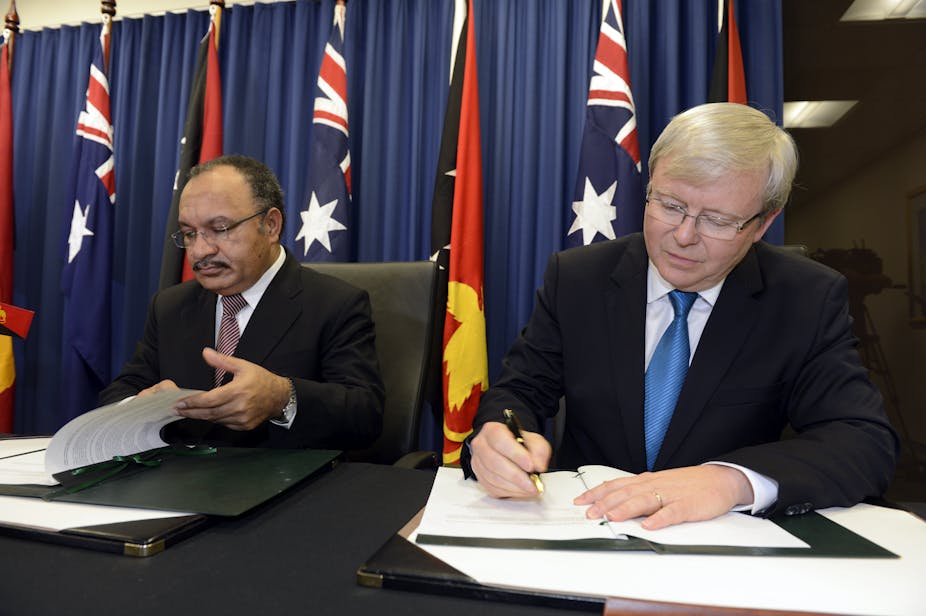The new asylum seeker arrangement between Australia and Papua New Guinea is almost certain not to comply with Australia’s international law obligations.
In favour of the Australian government’s legal position, the United Nations Convention relating to the Status of Refugees does not expressly prohibit the offshore processing or resettlement overseas of people who initially seek asylum in Australia. At most, processing and settlement onshore in Australia is internationally expected (including so that we do not burden poor neighbours), but is not legally required.
Australia’s core obligation under the convention is not to return any person to a place where they are at risk of persecution. The government would argue that transfer to PNG does not amount to return to persecution in the refugee’s home country. If the processes on PNG work as they should, there is also no undue risk of return to persecution from PNG, so Australia is not legally responsible for “chain returning” asylum seekers through PNG.
But there are at least five major legal problems with the arrangement. Australia is likely to violate its obligation under Article 31 of the refugee convention not to penalise an asylum seeker on account of his or her “illegal” mode of entry to Australia. Only asylum seekers arriving by boat, not plane, will go to PNG. The former are thus subject to unjustified adverse differential treatment, partly because the government wishes to “deter” further arrivals.
Asylum seekers will also be mandatorily detained for protracted periods in PNG, and this is the clearest possible contravention of international human rights law. The conditions in detention are also unlikely to meet minimum international standards on the quality of detention facilities and services, and the treatment of detainees, as a recent UNHCR report on the facilities at Manus Island shows. Both Australia and PNG bear separate legal responsibility for their respective contributions in formulating and implementing the illegal detention regime.
Further, the quality of the refugee status determination processes in PNG is likely to be very poor and not in conformity with international standards. PNG officials lack the necessary expertise and capacity, and Australia is unlikely to be able to improve the situation in time. Bad decisions inevitably lead to the rejection of refugee claims and expose refugees to return to persecution. If that happens, Australia will bear legal responsibility alongside PNG for failing to ensure the necessary procedures to prevent return to persecution.
Finally, those recognised as refugees and settled in PNG are highly unlikely to enjoy all of the human rights owed to them under the refugee convention. Violence, including sexual violence, is endemic in PNG, so refugees will not be physically safe, despite the billions of dollars of Australian aid money pouring into law enforcement in PNG in recent years.
In addition, basic rights to health care, education, work, social security and an adequate standard of living are also highly unlikely to be sufficiently protected, given the chronic poverty in PNG and the lack of capacity of the PNG government. If such rights are guaranteed to refugees, that will create a different problem: PNG citizens will wonder why refugees are getting a better deal than them.
There are also real questions whether the arrangement meets Australia’s domestic law requirements for transferring asylum seekers abroad. If the “Malaysia Solution” case is indicative, the Australian High Court is unlikely to view the PNG arrangement as satisfactory.
What matters is not whether PNG is a party to the refugee convention, but whether refugee protection is effective in PNG. In my view, it is not. But a legal challenge is unlikely to happen before the election.

